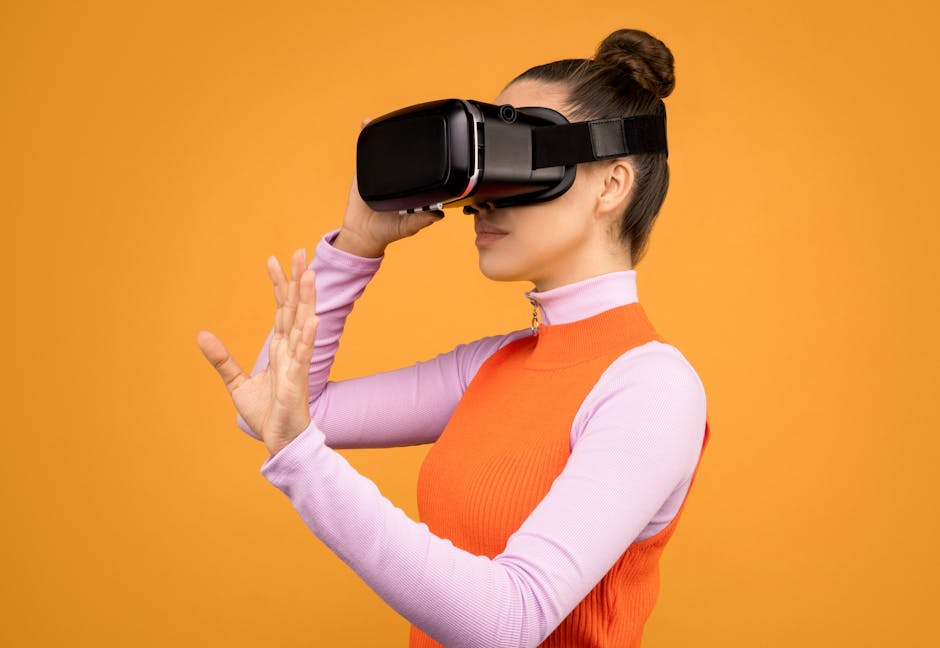Revolutionizing Education with Virtual and Augmented Reality
Virtual and augmented reality (VR and AR) are no longer limited to the realms of gaming and entertainment. These transformative technologies are making their way into education, reshaping how students learn and interact with information. By creating immersive environments, VR and AR allow learners to explore concepts in ways that traditional methods simply cannot achieve. From experiencing historical events firsthand to performing virtual science experiments, these tools open up a world of possibilities that enrich education for students of all ages.

The Role of Virtual and Augmented Reality in Modern Education
Education has always sought innovative methods to engage learners, but VR and AR are taking this to an entirely new level. These technologies provide an interactive experience that bridges the gap between theoretical knowledge and practical application. For instance, medical students can practice surgeries in a risk-free virtual environment, gaining hands-on skills without endangering real patients.
One area where AR shines is in its ability to overlay digital information onto the physical world. Imagine a biology class where students point their devices at a diagram of the human body, instantly revealing 3D models of organs with detailed explanations. This interactive layer fosters curiosity and makes learning an active process rather than a passive one.
VR’s capability to simulate different environments is revolutionizing fields like geography and history. Students can virtually walk through ancient ruins or explore ecosystems from across the globe without leaving their classrooms. These experiences not only make learning more engaging but also deepen understanding by placing students directly within the context of what they are studying.
Benefits and Challenges of Implementing VR and AR in Classrooms
The integration of VR and AR into educational settings comes with numerous benefits. Firstly, these technologies cater to various learning styles. Visual learners benefit from 3D representations, while kinesthetic learners thrive when they can interact directly with virtual objects. This inclusivity ensures that more students can connect with the material being taught.
Another advantage is the capacity for personalized learning. Through adaptive programs powered by AR, educators can tailor content to meet each student’s unique needs and pace. For example, language-learning apps using AR can provide real-time translations by scanning text or objects, helping users better grasp foreign languages.
Challenges remain in widespread adoption. Cost is a significant barrier, as VR headsets and AR-capable devices can be expensive for schools operating on tight budgets. Additionally, teacher training is critical; without proper guidance, even the most advanced tools can fail to achieve their potential in enhancing education.
Industries Leading the Way in VR and AR Educational Tools
Several industries have taken strides in developing VR and AR tools tailored for education. Companies like zSpace and Merge Labs specialize in creating affordable AR/VR solutions for classrooms. Their tools enable students to dissect virtual frogs or manipulate molecules in chemistry labs without needing physical specimens or materials.
Higher education institutions are also leveraging these technologies to train professionals in complex fields. For example, aerospace engineers use VR simulators for aircraft design testing, while nursing programs incorporate AR tools to practice patient assessments. These applications demonstrate how diverse industries are investing in AR/VR to address specific educational needs.
Gaming platforms such as Minecraft have also embraced educational elements through AR integrations. Teachers use these platforms to teach coding skills or historical reconstructions, combining fun with learning effectively.
| Company | Focus Area |
|---|---|
| MEL Science | Interactive chemistry kits with VR experiments |
| EON Reality | AR/VR solutions for vocational training |
| Labster | Virtual science laboratories for schools |
The Future Potential of VR and AR in Education
The applications of VR and AR in education are still expanding as technology becomes more sophisticated. Concepts like virtual field trips are evolving rapidly; imagine entire classrooms attending a live exploration of Mars guided by NASA scientists through VR headsets. Such possibilities were once confined to science fiction but are inching closer to reality every year.
AR is also expected to integrate seamlessly into wearable technology like smart glasses. These innovations could allow students to receive real-time guidance during tasks such as mechanical repairs or artistic endeavors without needing separate devices.
Another promising development is collaborative learning in virtual environments. Students from different parts of the world could meet in shared virtual spaces to work on projects together, fostering cultural exchange and teamwork skills that are invaluable in today’s interconnected society.
The potential for data collection through VR/AR tools is another area ripe for exploration. With analytics integrated into these platforms, educators can track engagement levels and learning outcomes more effectively than ever before.
Final Thoughts on Revolutionizing Education Through Technology
The integration of virtual and augmented reality into education signals a monumental shift in how we approach teaching and learning. While challenges such as cost and accessibility remain hurdles that need addressing, the benefits these technologies bring far outweigh their limitations. They make abstract concepts tangible, cater to diverse learning needs, and prepare students for a future where technological proficiency will be indispensable.
This transformation pushes us to consider not just what we learn but how we learn it. As educators continue experimenting with these tools, one thing becomes clear: the classroom of tomorrow may look very different from today’s traditional setups. Exploring this topic further might leave you wondering how else technology could redefine human experiences beyond education itself, an inquiry well worth pursuing.
This article was generated by AI